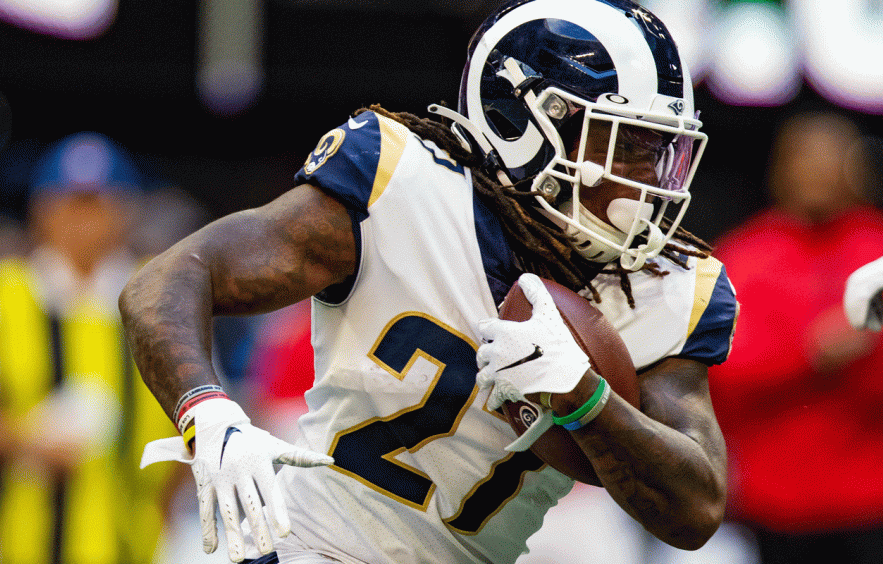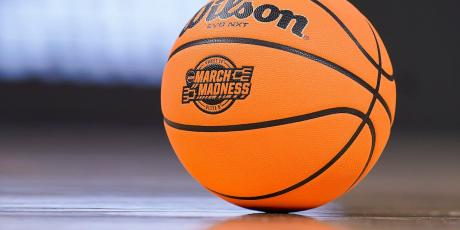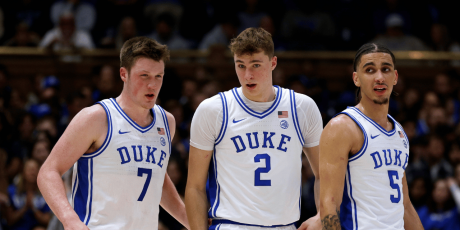Running Back Sleepers & Breakout Candidates

Last Updated: 8/29/2021
If you haven't yet read my 2021 Draft Day Strategery or 99 Stats articles, you may want to hit those first since they will provide a better overview of where my head is at (fantasy-wise) at this point in the offseason. These positional breakout/sleeper articles will do a deeper dive into a few players that are particularly intriguing heading into 2021 fantasy drafts.
More Sleeper & Breakout Candidates: QB | WR | TE
For the purposes of this article, I'm defining a breakout candidate as a younger (non-rookie) player who has yet to finish as a fantasy starter. A sleeper is going late in drafts and has a good chance to outperform his draft position.
Breakout Candidates
Gus Edwards, Ravens
Edwards enters RB2 territory now that it appears that Dobbins is done for the year. The Ravens typically utilize a committee in the backfield, so Edwards is not a shoo-in for the 17-20 touches that typically lead to an RB1 season. However, he does have RB1 upside if the team utilizes him in the red zone as Dobbins was down the stretch. Dobbins scored nine touchdowns in the team's final eight games, including the playoffs. Ravens running backs combined to score 17 touchdowns during the regular season, so if Edwards sees 70% of those scores, he could find the end zone 10+ times. Since 2018, in the 21 games where Edwards has seen at least nine carries, he has averaged 14.8 touches (14.3 carries) for 74 yards and 0.29 touchdowns per game. He had the No. 4 PFF run grade last season and has finished 19th or higher in that metric in each of the last three seasons. He owns the fifth-highest yards per carry (5.18) from 2019-20. He hasn't been a big part of the passing game, but he has caught 18-of-22 career targets (81.8% catch rate) for 10.8 yards per catch. In other words, it's not that he can't catch the ball–it's that he hasn't been asked to thus far in his career. In June, Jeff Zrebiec reported that the Ravens were emphasizing getting the backs more involved in the passing game. Whether that translates to Edwards remains to be seen. Ty'son Williams is apparently the frontrunner for the backup job over Justice Hill, per beat writer Jamison Hensley. Edwards' ADP is likely to rise into the fourth round, which is fair. He's a great target in the fifth round, though he carries more value in standard and half-PPR formats than in full-PPR leagues.
Darrell Henderson, Rams
Henderson served as the Rams’ lead back from Week 2 to Week 7, racking up 86 total yards (4.84 YPC) and 0.67 touchdowns on 15.5 touches per game. Those are low-end RB1 numbers, which is what we can expect if the Rams install him as the starter after Cam Akers’ Achilles injury. (And that seems to be the case.)
Disclaimer: The team moved away from him once before–by drafting Akers and then giving Akers a bellcow workload down the stretch–so the Rams could sign a veteran like Le’Veon Bell or Adrian Peterson to avoid pressing Henderson into 15- to 20-touch service. But so far, no move has been made.
Henderson had the overall No. 3 pass-blocking grade (per PFF) and is a good receiver, so he’s fully capable of playing on all three downs. He could see more than the 15.5 touches he saw last season as the starter since Akers is out, Malcolm Brown is gone and the Rams are pretty thin at the position. He split time with Patrick Taylor, Jr. as a junior at Memphis, but he handled 16.6 touches per game that year–with an 8.9 yards per carry, by the way–so he’s handled a big workload before.
Update (8/26): Henderson is still a breakout candidate, but his path to high-end RB2/low-end RB1 numbers is now in doubt after the Rams traded for Sony Michel. He's in the high-upside/murky-situation tier of backs now.
Raheem Mostert, 49ers
Mostert was technically the No. 24 RB in 2019, so maybe he has already broken out, but I like writing about him–so why not do it again?
Take a look at what Mostert has produced over the last couple of seasons: In his last 16 games, including the playoffs, he has 221 carries for 1,236 yards (5.59 yards per carry) and 13 touchdowns and has added 25-233-2 as a receiver. The resulting 15.6 PPG (half-PPR) is about what Jonathan Taylor scored as last year’s No. 9 running back.
Some fantasy analysts label Mostert as a system back, and maybe that’s true to a certain extent, but system backs don’t register the two fastest speeds for a ball-carrier in a given season, per NFL Next Gen Stats. Kyle Shanahan may be able to turn any running back into a star, but he’s also smart enough not to shelve this sort of production just to force-feed his third-round rookie, Trey Sermon.
If Mostert stays healthy and continues to serve as the lead back, top 15 numbers are possible.
Chase Edmonds, Cardinals
James Conner is going roughly 2-3 rounds later than Edmonds, though it’s not clear which player is likely to lead this backfield in touches. Adam Beasley of Pro Football Network cites a source in Arizona who indicates that the training camp battle at running back “might be a battle in name only” and that “Edmonds is the favorite to be the team’s featured back” in 2021. If that’s the case, Edmonds should return value on his RB28 ADP in half-PPR formats and fare even better in full-PPR.
However, ESPN’s Josh Weinfuss recently reported that the duo would “split the primary reps to start, with whoever has the hot hand getting the ball.”
Whatever the case, Edmonds may not see much of a goal-line role. He was out-touched 34-to-5 inside the opponent’s 10-yard line last season. With both Kyler Murray and Conner vulturing goal-line work, he’s unlikely to see an uptick in those opportunities in 2021.
Myles Gaskin, Dolphins
Gaskin averaged more than 18 touches per game when active last season, including 4.1 receptions per game, which puts him on pace for 60+ catches over a full season. The Dolphins signed Malcolm Brown, giving him the 11th-most guaranteed money for this year’s free-agent class, so that shouldn't move Gaskin’s needle too much. However, Brown started Miami's first preseason game so the speculation is that he's ahead of Gaskin at this point.
The thing that jumped out to me about Gaskin’s 2020 season is how the Dolphins went right back to him even as he was coming off of a couple of injuries. After missing four games midseason, Gaskin returned to 23 touches in Week 13. After missing two more games, he returned to 19 touches in Week 16.
Zack Moss, Bills
I’m a little reluctant to get on the Zack Moss train again after last year. Even if he wins the RB1 job and gets 60-65% of the carries, his upside is capped since Josh Allen is really the team’s goal-line back.
However, Matthew Fairburn of The Athletic reported that Moss has “consistently been the best running back” in camp and Joe Buscaglia (also of The Athletic) said that Moss could “take over the backfield...if he continues to improve,” so things seem to be trending his way.
With Allen stealing most of the rushing touchdowns, the Bills backfield produced the third-fewest fantasy points last season.
Damien Harris, Patriots
I’m not predicting a Harris breakout since 1) it’s the Patriots, 2) Cam Newton is still the starter, so rushing touchdowns are tough to come by, and 3) Harris had almost no receiving role last season. But I acknowledge that there’s a path to an RB2 season for Harris if he’s the lead back (15+ carries a game) and he starts to get more involved as a receiver (1-3 receptions per game).
Despite the annual ugliness of the New England backfield, it did produce the ninth-most fantasy points last season, and that was with Newton vulturing a bunch of rushing touchdowns. If Harris can become the bell cow–and that’s a huge “if”–watch out.
Update (8/26): A breakout looks more likely with Mac Jones playing so well in camp. If Jones is the starter, then there will be a few extra rushing touchdowns up for grabs. The Patriots also traded Sony Michel away, which removes Harris' primary competition for carries.
Note: I don’t consider rookies to be “breakout candidates” since they don’t yet have an NFL season to break out from, but Najee Harris, Michael Carter, Javonte Williams, Travis Etienne and Trey Sermon seem to be the five rookie backs most likely to make an impact this season. Of this group, I like Carter the most at cost.
Sleepers
A.J. Dillon, Packers
Dillon could be listed as a breakout candidate as well, but he’s being drafted outside the first 10 rounds at some sites, so I’ll put him in the sleeper category.
At worst, he should fill the 10.7-touch role that Williams had last year backing up Aaron Jones. The Packers had roughly 470 running back touches last season, so Dillon could see 200+ in a part-time role. Everyone knows that the Packers are reluctant to overwork Jones during the regular season, so Dillon should have some spike weeks, even if Jones stays healthy.
In the one game (Week 16 vs. Tennessee) that Dillon played and Williams missed, the rookie finished with 124 rushing yards and two scores on 21 carries. Jones had 10 carries for 94 yards in that game. If anything were to happen to Jones, Dillon would have RB1 upside.
Jamaal Williams, Lions
Williams is currently the 45th back off the board in the 11th/12th round. Drafters are really sleeping on him at this point. The Lions cut Kerryon Johnson and let Adrian Peterson walk, which means that 239 touches have been vacated. D'Andre Swift will surely see some of that work, but he’s unlikely to surpass 20.0 touches per game with the capable Williams around.
Head coach Dan Campbell referred to Swift and Williams as a “one-two punch,” while offensive coordinator Anthony Lynn said the team would “ride the hot hand at running back” and called Williams “a classic ‘A’ back,” indicating that he’d have an every-week role.
It’s fairly easy to project Williams for 200+ touches in a complementary role. Remember, the Lions gave Williams the third-most guaranteed money in this year’s free-agent class.
Nyheim Hines, Colts
Hines surprisingly finished as the No. 20 fantasy back last season, averaging 10.1 PPG in half-PPR. He did most of his damage as a receiver (63-482-4 on 76 targets), vulturing a sizable and valuable workload from Jonathan Taylor. Hines’ involvement didn’t decline at all in the final weeks of the season–it actually increased from 8.7 touches per game (Weeks 1-10) to 9.4 in the final six games of the season, when Taylor was active–so prospective Taylor owners hoping for a mega-workload from the second-year back may be disappointed.
As for Hines, he does offer a decent weekly floor; he scored 7.0+ fantasy points (PPR) in 12 of 16 games last year. He also had four spike weeks of 17+, including Week 12 (which Taylor missed), where Hines turned 18 touches into 95 total yards. That game suggests that Hines would likely see a significant uptick in touches if Taylor were to miss any time, though Marlon Mack would be in the mix as well.
Latavius Murray, Saints
Over the past two seasons, when Alvin Kamara is active and healthy (29 games), Murray has averaged 9.9 touches for 48 yards and 0.24 touchdowns per game. In the two games that Kamara missed, Murray averaged an eye-popping 31.0 touches for 153.5 yards and 2.0 touchdowns. In short, Murray is a shaky RB3/flex when Kamara is active and has overall RB1 upside when Kamara is out.
The Athletic’s Larry Holder suggested that, in the wake of Drew Brees’ retirement, the team could “lean heavily” on the running game which would likely serve to raise Murray’s weekly floor. He should be a prime target for anyone utilizing a Zero RB strategy. Really, anyone who wants upside on their bench should be targeting Murray.
Update (8/26): Murray has tumbled down the rankings after consistent whispers out of camp that his job may be in jeopardy. Apparently, Tony Jones has been the best of the backup candidates.
James Conner, Cardinals
Conner is still just 26 years old, though drafters seem to be treating him like he’s 30+. After 270 touches, 1,470 yards and 13 touchdowns (en route to a No. 7 finish) in 2018, Conner missed nine games in the last two seasons with various injuries. Still, he hasn’t averaged less than 4.0 yards per carry in a season–he posted 4.3 YPC in 2020–and he broke tackles at the ninth-highest rate last season.
He’s a dual-threat who’s perfectly capable of taking over Kenyan Drake’s role from last season, if healthy. And health is the caveat with Conner. He’s already had surgery in 2021–he injured his toe in an ATV accident and PFN had a source that suggested he was “a bit banged up” during spring workouts. Conner might be the lead ball-carrier in Arizona or he could serve as Edmonds’ backup. Time will tell.
Melvin Gordon, Broncos
When the offseason started, Gordon was looking like a screaming value in the fifth round. Phillip Lindsay had moved on and it appeared that Gordon would see bellcow touches as the lead back in Denver. But then the Broncos traded up to draft Javonte Williams, and now Gordon is going in the 10th/11th round as the fantasy community has concluded that he’ll serve as Williams’ caddy.
This assumption has been fueled by Ryan O’Halloran of the Denver Post, who has predicted that Williams will not only lead the team in carries but that he would start Week 1 as well. Gordon played pretty well for the Broncos last season–1,144 total yards and 4.7 yards per carry–and can catch the ball, so he may be tougher to usurp than people think.


















